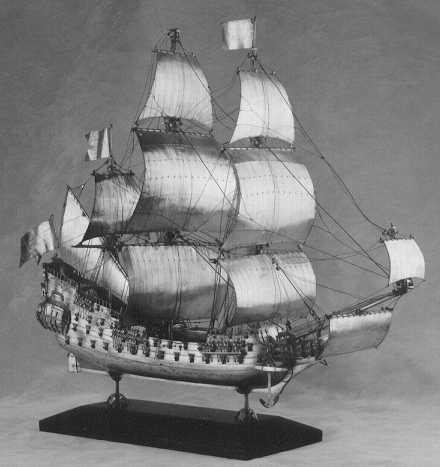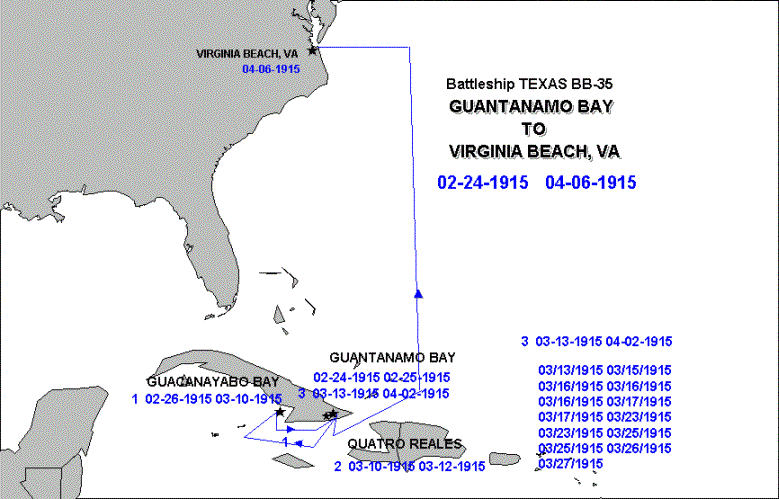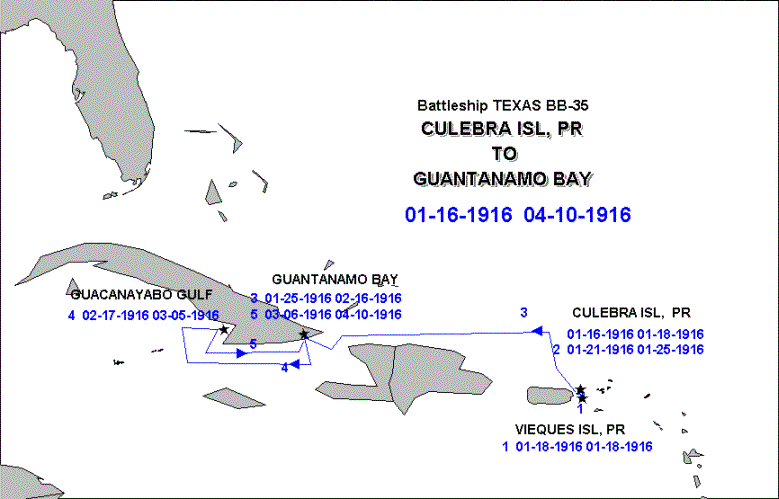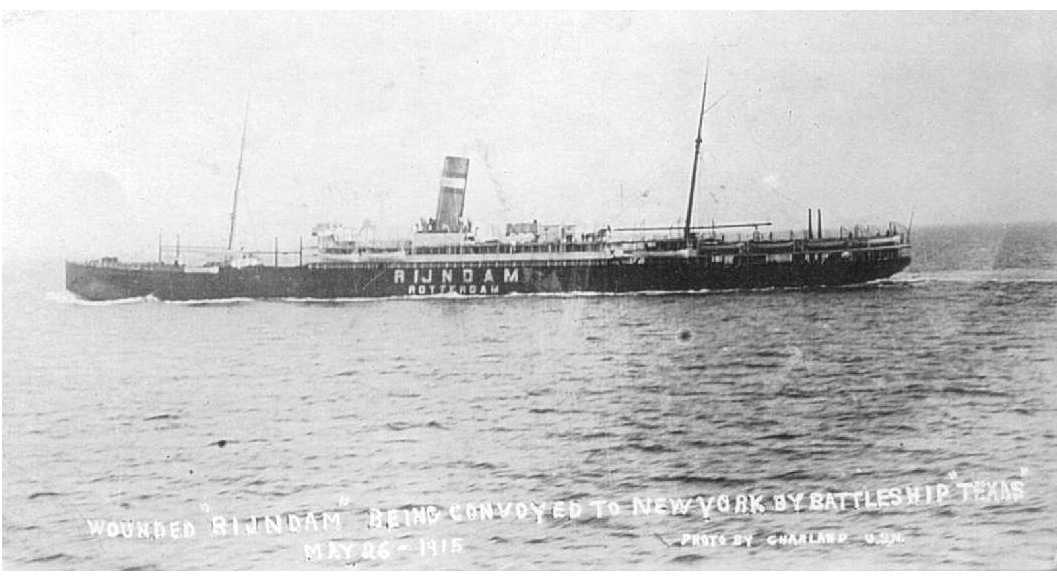On 26 May 1915, TEXAS responded to
an emergency call to rescue passengers aboard the damaged
Holland-American ship RYNDAM (RIJNDAM in Dutch). The RYNDAM and the
Norwegian steam JOESPH J CUNEO collided in a dense fog off Nantucket
Shoals, off the Rhode Island shore. Racing through the fog with the
SOUTH CAROLINA, the ships arrived at the location and rescued 230
passengers. With the passengers rescued, both ships escorted the damaged
RYNDAM on a19 hour move to New York City.
The company and the Dutch government presented TEXAS and SOUTH CAROLINA
with a model of the 17th century Dutch flagship De Zeven Provincien.
Today, the pewter model is on display in the Wardroom.
Additional data about RIJNNDAM from
"Mariners List courtesy of Mr. Ted Finch.
The RIJNDAM was a 12,340 gross ton ship, length 550.3ft x beam 62.3ft,
one funnel, two masts, twin screw and a speed of 15 knots. Accommodation
for 286-1st, 196-2nd and 1,800-3rd class passengers. Built by Harland &
Wolff, Belfast, she was launched for Holland America Line on 18th May
1901. Her maiden voyage started on 10th Oct.1901 when she left Rotterdam
for New York. On 18th Jan.1916 she was damaged by a mine in the North
Sea but was repaired and resumed Rotterdam - New York sailings on 15th
Apr.1916. Requisitioned by the US Government for transport service on
21st Mar.1918, she was released at Rotterdam in Oct.1919. On 31st
Jul.1920 she resumed Rotterdam - New York sailings, was refitted to
carry cabin and 3rd class passengers in May 1925, and cabin, tourist and
3rd class in May 1926. Her last Rotterdam - New York voyage started on
16th Apr.1929 and she was scrapped at Hendrik Ibo Ambacht, Netherlands,
in 1929.
|
Photo of the De Zeven Provincien courtesy of
Texas Parks and Wildlife Department
 |







